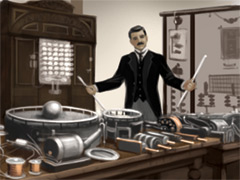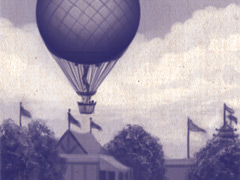Last month, I spoke at the Game Developers Conference in San Francisco, California. (It's primarily…
Game Submissions: Top 10 Things I Look For (Part 1)
I spend a good amount of time looking at games from game designers. These are the first 3 questions I ask myself when I consider them for publication.
—
(This is the first post in my “What Do Publishers Do” series. I received a lot of great questions in comments and messages; please let me know if you have others.)
I spend a good amount of my time as a publisher looking at game submissions from game designers. Game designers and game publishers often work together like book authors and book publishers. A designer creates a prototype and pitches it to us through a meeting or a sell sheet. We look at each pitch, and sometimes we request a prototype to play.
I have identified the top 10 questions I ask myself when I consider a game submission. These 3 questions are the ones I focus on first:
—
1. Does it fit our brand?
 Different publishers choose to publish different types of games. There are a wide variety of factors that motivate that choice: personal factors (what games do I like?), market factors (what games are selling?), business factors (do I want to deepen my product line? or broaden it?), and philosophical factors (what games does the world need?). The types of games a company publishes gives it an identity; marketing people (using a ranching metaphor) call this a “brand.”
Different publishers choose to publish different types of games. There are a wide variety of factors that motivate that choice: personal factors (what games do I like?), market factors (what games are selling?), business factors (do I want to deepen my product line? or broaden it?), and philosophical factors (what games does the world need?). The types of games a company publishes gives it an identity; marketing people (using a ranching metaphor) call this a “brand.”
At Foxtrot Games, we want to publish beautiful, approachable, and engaging games — especially those with themes that somehow celebrate what’s good in the world. (You can read more details about this “brand” on our company’s Submissions page.) The first thing I consider when I get a game submission is whether or not it fits our brand.
—
2. What is the mechanical hook? (Does it have one?)
 Does something about the game really stand out? Marketing people (using a fishing metaphor) call this the “hook”. There are hundreds of games released each year, and I’ll have a hard time selling one that doesn’t stand out. Because I aim for beautiful games, the banners and the box covers often pique people’s interest. People often come over to a demo table and ask, “What do you do in this game?” or “How does this play?” I want to be able in a few short sentences to tell them something about the mechanisms and game play that makes their eyes light up and causes them to say, “Oh, cool!” Here’s an example of how that goes with our game Lanterns:
Does something about the game really stand out? Marketing people (using a fishing metaphor) call this the “hook”. There are hundreds of games released each year, and I’ll have a hard time selling one that doesn’t stand out. Because I aim for beautiful games, the banners and the box covers often pique people’s interest. People often come over to a demo table and ask, “What do you do in this game?” or “How does this play?” I want to be able in a few short sentences to tell them something about the mechanisms and game play that makes their eyes light up and causes them to say, “Oh, cool!” Here’s an example of how that goes with our game Lanterns:
“On your turn, you place a tile down like this. You’ll get a lantern card based on what side of the tile is facing you, a blue one. But so do all of your opponents. So when you play this tile, this player gets a green card, that player gets a red card, and this player gets a white card.”
The first time I read this part of the rulebook for Lanterns, my eyes lit up and I said, “Oh, cool!” It made me want to play the game right away.
—
3. Is it fun (as it is, to me)?
 If something fits our brand and has a hook that makes my eyes light up, then I want to play it. Some designers send me print and play (PnP) files to make my own prototype (Chris did that with Lanterns), and others mail me nice prototypes (Alex did that with World’s Fair 1893). I play it through multiple times (solo, with my wife and kids, and with close friends who help me as Foxtrot Games developers) to figure out what makes it tick, what decisions and tradeoffs players are making, and what moments are the most memorable and fun. The game at this stage may still stumble (or even fall over) at some spots and may still have some holes that need patching, but I want to play it a dozen times and have lots of fun moments with it.
If something fits our brand and has a hook that makes my eyes light up, then I want to play it. Some designers send me print and play (PnP) files to make my own prototype (Chris did that with Lanterns), and others mail me nice prototypes (Alex did that with World’s Fair 1893). I play it through multiple times (solo, with my wife and kids, and with close friends who help me as Foxtrot Games developers) to figure out what makes it tick, what decisions and tradeoffs players are making, and what moments are the most memorable and fun. The game at this stage may still stumble (or even fall over) at some spots and may still have some holes that need patching, but I want to play it a dozen times and have lots of fun moments with it.
—
I do keep all 10 of the questions in mind when I consider a submission, but I think about these first 3 much more than the others at first. Once I’m confident the game fits our brand, has a mechanical hook, and is already fun enough as it is, then I start to consider some the other questions in more detail. I’ll take a look at the next 4 questions in the next post. Continue to Part 2 →
* Illustrations by Beth Sobel from our upcoming game World’s Fair 1893: Japanese Bazaar, Tesla’s Experiments, and Captive Balloon.
This Post Has 6 Comments
Comments are closed.

[…] ← Previous […]
[…] I want to license them for publication. I covered the first 7 questions in my two previous posts (Part 1 and Part […]
[…] Part 1: […]
[…] pas la possibilité de publier ce qu’il veut. C’est une petite structure qui marche au feeling autant qu’aux prévisions financières. Foxtrot a bien vite compris l’intérêt de publier ses jeux en print-and-play mais en pnp comme […]
[…] la possibilité de publier tout ce qu’il veut. C’est une petite structure qui marche au feeling autant qu’aux prévisions financières. Foxtrot a bien vite compris l’intérêt de publier ses jeux en print-and-play mais en pnp comme […]
[…] wrote a series of blog posts about the top 10 things I consider when I am looking at a submission, and I recommend people take a look at that that full list. But the biggest factor is how much it […]